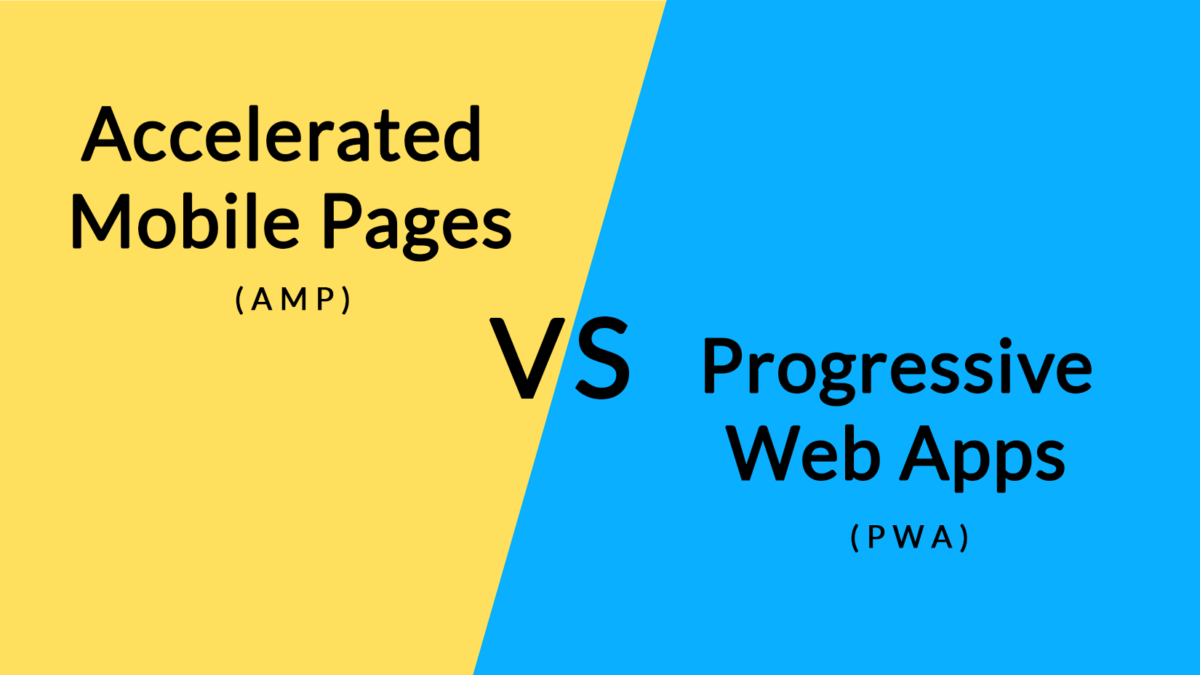Different digital platforms have undergone a massive transformation with the rise in mobile usage. With the increase in the number of people using the internet on the go, it has become necessary to provide the best mobile experience. Since the competition out there is fierce, it is essential to stay on top of the game by implementing innovative technologies to enhance the user experience. Two such technologies include Accelerated Mobile Pages and Progressive Web Apps.
Since these two technologies enable viewers to have fast access to web content on their smartphones and tablets. Professionals have backed both technologies as some of the most promising innovations in the web and app development field. When the rise in the use of mobiles occurred, users either used mobile browsers to surf the web. Or if there was a dedicated app for a site, most users installed the app. However, mobile browsing didn’t offer a smooth user experience. On the other hand, in apps, the power consumption is high and the management is compromised.
Issues With Slow Loading Speed And App Usage
Did you know that most of the web users immediately abandon the page if the loading time is high? This can reduce conversions and affect the profits of a site. Moreover, most of the users uninstall an app within 72 hours of installation. It’s because applications consume space and power and not all users find this an efficient way to use their mobile devices.
As a result, brands have been searching for ways to capture their audience and engage users. This has given rise to the need to find a solution that is the best of both worlds. What could that be? Merging the web and app sounds like a good idea! Accelerated Mobile Pages and Progressive Web Apps came as a boon to bring this idea to reality.
Understanding Accelerated Mobile Pages And Progressive Web Apps
Accelerated Mobile Pages are created on open source platforms that enable fast loading of content on mobile devices. Mostly news and e-commerce websites use them to provide fast content loading. However, they strip the javascript to save bandwidth and display the use of the content. This can reduce engagement and ultimately drop the conversion rates.
Progressive Web Apps are web apps and website pages providing the look and feel of a regular mobile app. However, they have the option for the user to visit a website through features such as push notifications, offline experiences, and background syncs. They reduce the load time of web pages as well as fill the gaps of AMPs. Currently, most large scale enterprises use them.
How PWAs Are Different Than AMPs?
A PWA provides three features extra that differentiate it from an AMP.
- The engagement rate is high in PWAs.
- The working of PWA is quicker than AMP.
- The user experience provided by PWA is more reliable as AMP removes some scripts which can affect user experience.
PWAs also increase the ease of a sign-up process by speeding up the authentication process. Even for online payments, Users don’t need to enter the entire credit card information and fill out forms. All they need to do is enter the CVV and simplify the transaction. Thus, the transactions are secure and seamless at the same time.
Now, these were some of the ways in which PWAs win over AMPs. However, this doesn’t mean that they are 100% better. To gain a deeper understanding, let’s take a look at some pros and cons of both.
AMP: Pros And Cons
Pros
- Lowers the loading time of websites and boosts speed
- Enhances keyword ranking in mobile sites and improves mobile SEO
- Reduces load on the server
- Supports the facility for displaying ads
- Perfect for publisher-based sites
Cons
- Works on a cache-basis only
- Unable to track user activity on AMP pages
- Unsuitable for e-commerce websites
- Doesn’t do much for search engine ranking
PWA: Pros And Cons
Pros
- Appropriate for all e-commerce websites
- Automatic updates
- Visiting the app store is not a must
- Installing the app physically is not necessary
Cons
- Platform limitations can cause re-engagement problems
Progressive Web Apps Or Accelerated Mobile Pages, What Should You Choose?
User experience has the top priority for any website owner when it comes to offering features. If you have an HTTPS website, both AMP and PWAs will help you maintain good user engagement. Therefore, having a clear understanding of both technologies is a must. The choice you make depends on your priority. If only quick loading of content is your target, then AMPs are the way to go. However, if you are looking forward to overall better user engagement, PWAs can serve your purpose. They also help in increasing conversion rates and increasing profits.
If you’re looking for progressive web apps development services? Then get in touch with us. Our web developers are experienced in building PWA and can provide the right solutions as per your requirement.

